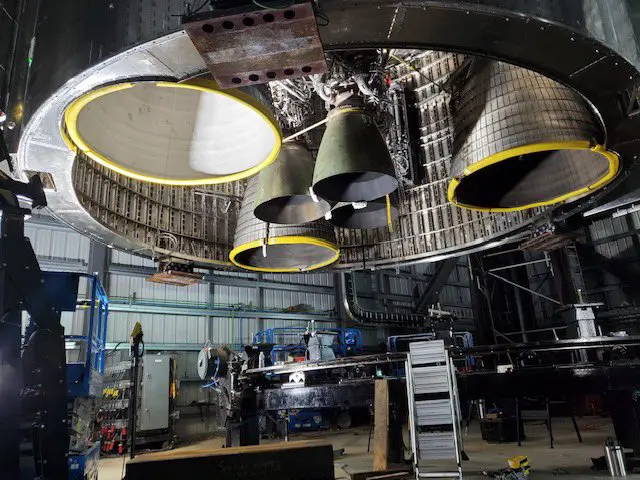SpaceX is constantly working on both the Starship 20 prototype (S20/Ship 20, previously SN20) and the Super Heavy Booster 4 prototype to prepare them for the cryogenic pressure tests. The tests were delayed indefinitely after SpaceX moved S20 to the suborbital launch pad B at Starbase last month.
However, SpaceX started installing the missing heat shield tiles on the Starship 20 nosecone yesterday. The heat shield work is rapidly getting completed. A new Raptor engine was also installed on Ship 20 today.
The Booster 4 prototype has also been moved to the launch pad at Starbase this morning. According to last reports by the local observers, Booster 4 is standing tall beside the launch mount at Starbase Boca Chica, Texas.
SpaceX not only started installing the missing thermal protection system (TPS) tiles on Starship 20 yesterday, the company also replaced some existing tiles as well (see video below). At the time of the full stacking of Ship 20 on Booster 4 last month, Elon Musk said that the missing tiles are on their way as they had to be custom-designed to fit specific areas of the spaceship.
It now seems like these specific tiles have arrived at Starbase and Starship 20 is getting the required treatment it needed for quite some time now. Not only the nosecone but the forward flap and surrounding area also received new tiles. This work is in progress and several tiles are still missing from S20.
These TPS tiles will help Starship bear high temperatures on re-entry burns to the Earth’s atmosphere when attempting to land back on the planet after its journeys.
2 Raptor engines were seen being transported to the Starbase production site yesterday. These new Raptors were then seen getting installed on Starship 20 late last night in a video by the NasaSpaceFlight.com team who has human cameramen and bot cameras around Boca Chica to record SpaceX activities 24/7.
The following image that SpaceX CEO Elon Musk shared before the Starship/Booster 4 stacking last month shows 6 Raptor engines installed. 3 of these engines have sea-level and 3 have vacuum-optimized exhaust nozzles.

This looks like the optimal setup for the Starship 20 orbital flight test that SpaceX is aiming to conduct towards the end of this year, pending approval by the FAA.
Stay tuned for future updates on Starship and SpaceX, Follow us on:
Google News | X (Twitter) | Flipboard | WhatsApp Channel | RSS (Feedly).


